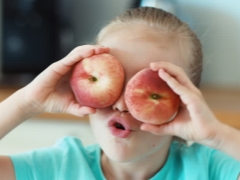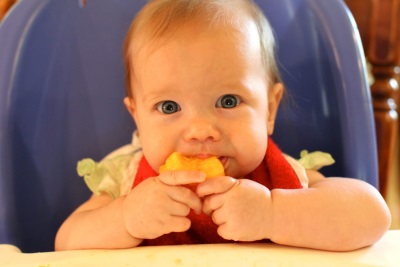At what age can peaches be given to children?
Fruit supplements usually appear in the baby’s menu after the introduction of vegetables and cereals. Children eat it with pleasure, and parents are glad that they can provide useful substances to the baby’s body. One of the favorite fruits of many kids are peaches. But so that they do not harm the health of the crumbs, you need to enter them correctly.
Benefit
- It is a source of vitamins A, C and group B.
- Celebrate fortifying effect, so they are recommended during recovery after illness.
- Their use has a positive effect on brain activity, memory and performance.
- Due to the high content of potassium salts, they have a beneficial effect on the work of the heart muscle.
- They have a mild diuretic effect.
- Peach juice eliminates low acidity and constipation.
- Eating pulp and juice from this fruit helps to increase hemoglobin levels.
You can learn more about the benefits by watching the program “Live Healthy”. It discusses the flat (fig) peaches in detail.
Minuses
- Due to their high carbohydrate content, they should not be included in the diet with overweight or diabetes.
- With excessive use of the child may experience a disorder of the digestive function.
- Some children have individual intolerance.
From how many months can you put in feed?
In what form to give?
The introduction of peaches in the diet of a small child start with mashed potatoes. Very often mothers buy ready-made canned peach purees, the only ingredients of which are. Their advantage is environmental friendliness and homogeneity.
If you want to cook the baby puree yourself from home or store peaches, the fruit should be washed and dipped for a minute in boiling water. Then they are cooled, for example, under cold water, the skin is removed from them, the fruit is cut into pieces, the bone is removed, and then the pulp is sent to a blender.
After grinding into a homogeneous mass, you can add a little water to the puree to make it more tender and liquid. On the first day, the baby is offered half a teaspoon of such mashed potatoes during breakfast, and if by the end of the day there are no signs of intolerance, the next day the portion can be doubled, gradually increasing to age norms.
Children over 10 months old can begin to offer a peach without skin, not in the form of mashed potatoes, but in small pieces. It is often mixed with homemade yogurt or cottage cheese. For kids older than a year, they can be added to different pastries.
Tips for choosing
What if a child swallows a bone?
The bone from the peach is quite large in size, so the situation when a child accidentally swallows it is dangerous because it can get stuck in the esophagus. If the bone enters the child’s stomach, and the child’s general condition is not disturbed, then most often this foreign object comes out naturally without any difficulty on the second to fourth day after ingestion. In this case, laxatives and enemas to help the child is not recommended, and in the diet of the crumbs it is worth adding foods with fiber (vegetables, grains, fruits).
If a child complains of abdominal pain or severe nausea, he has a cough with shortness of breath, there is repeated vomiting or feces show blood traces, you should immediately consult a doctor.
What to do if you are allergic?
If the baby has responded to the first portions of peach puree with a rash, redness, cough, runny nose, diarrhea or other negative symptoms, the new product should be canceled. In case of a pronounced reaction, you should consult a doctor for the selection of an antihistamine suitable for the age. Try this lure again in a few months.

































































